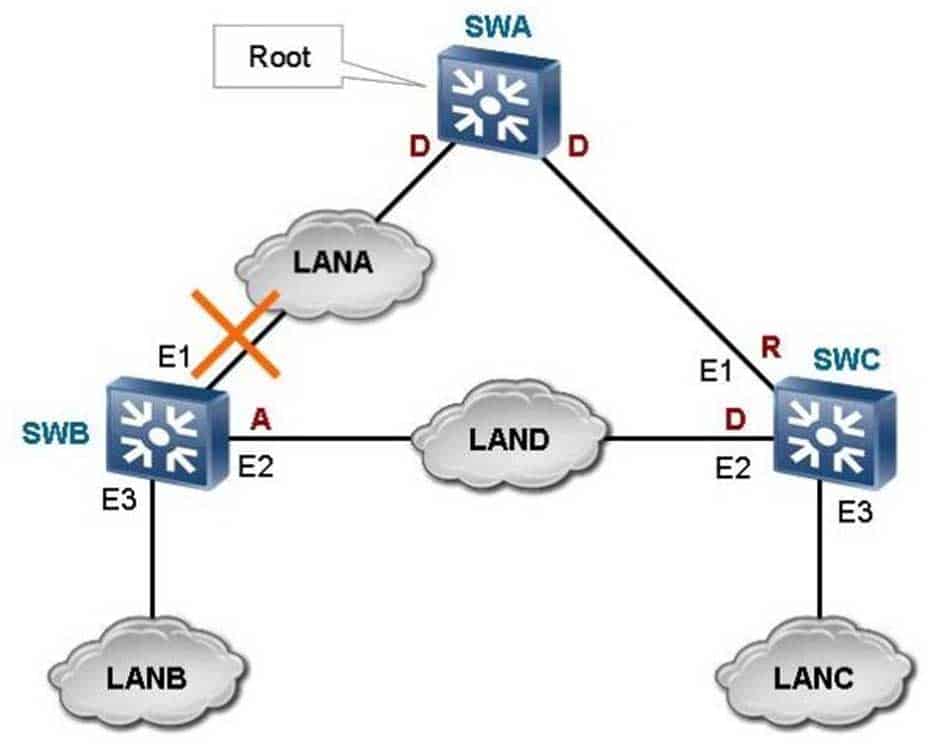H12-224 : HCNP-R&S Fast Track (Huawei Certified Network Professional – Routing & Switching Fast Track) : Part 15
-
BFD (a fast detection technology) enabled on a device quickly identifies a fault and reports the fault to the appropriate protocol module after detecting a master/slave switchover on the neighboring device. This causes the protocol module to quit the GR. As such, BFD and GR cannot be used together.
- True
- False
-
QoS can be performed in which of the following modes? (Choose three.)
- Best-effort service
- Integrated service
- Differentiated service
- Assured forwarding service
-
Exhibit:

H12-224 HCNP-R&S Fast Track (Huawei Certified Network Professional – Routing & Switching Fast Track) Part 15 Q03 018 Based on the DSCP field (first 6 bits of the ToS field), packets can be classified into how many types?
- 4
- 8
- 16
- 64
-
Simple traffic classification can be performed based on which of the following information in VLAN packets?
- DSCP
- IP precedence
- MPLX EXP
- 802.1p
-
The dynamic LACP requires devices at both ends to exchange protocol packets, while the static LACP does not require so.
- True
- False
-
Which of the following statements about VRRP fast switchover are true? (Choose three.)

H12-224 HCNP-R&S Fast Track (Huawei Certified Network Professional – Routing & Switching Fast Track) Part 15 Q06 019 - When VRRP is used to track a BFD or EFM session, if a tracked BFD or EFM session status changes, the BFD or EFM module notifies the VRRP module of the change. After that, the VRRP module implements a rapid master/backup switchover.
- A VRRP backup group can monitor a peer BFD session, a link BFD session, and a normal BFD session at the same time. In addition, it can monitor the interface status.
- When the status of a BFD session detected by a VRRP backup group changes, the master/slave switchover of routers in the VRRP backup group occurs by changing priorities of the master and slave routers.
- A VRRP backup group can monitor several BFD sessions at the same time. The status changes of these BFD sessions affect each other.
-
Which of the following numbers is the protocol number of VRRP packets?
- 112
- 113
- 114
- 115
-
Traffic shaping usually buffers packets that need to be dropped by traffic policing by means of buffer and token bucket.
- True
- False
-
In case of congestion, which of the following indexes will affect QoS? (Choose three.)
- Transmission delay
- Transmission jitter
- Packet loss ratio
- Transmission distance
-
BFD detects the link status immediately after a BFD session is set up. If BFD parameters are modified or deleted at one end of the BFD session, the other end will consider such a modification or deletion as a fault and services will be then affected. Therefore, exercise caution when modifying or deleting BFD parameters.
- True
- False
-
Which of the following statements are correct regarding VRRP advertisement message?
- VRRP has two kinds of advertisement message, one is sent by Master, the other is sent by Slave.
- VRRP has one kind of advertisement message which is sent by Master.
- VRRP has one kind of advertisement message which is sent by Slave.
- VRRP has two kinds of advertisement message, one is used for Master election, the other one is used in stable network after Master election.
-
Complex traffic classification can be performed based on which of the following packet information? (Choose three.)
- Packet priority
- Source and destination addresses
- Total Length of the Packet
- Source and destination port numbers
-
Which of the following queue scheduling technology can achieve better fairness?
- WFQ
- PQ
- CQ
- RR
-
Simple traffic classification in QoS classifies packets based on the 5-tuple information, including the source IP address, source port number, protocol number, destination IP address, and destination port number.
- True
- False
-
Which LSA is used by OSPF to implement GR?
- Type-3 LSA
- Type-5 LSA
- Type-9 LSA
- Type-10 LSA
-
None Stop Forwarding (NSF) is an important HA technology. It keeps neighbor relationships unchanged even in the case of a fault in the control plane of the router, protecting key services on the network from interruption.
- True
- False
-
Which of the following BFD versions is supported in VRP 5.7?
- Version 0
- Version 1
- Version 2
- Version 3
-
Which of the following statements about VRRP are true? (Choose three.)
- VRRP determines the roles of routers (master or backup) in a virtual router based on their priorities.
- If a backup router works in non-preemption mode and has a higher priority than the masterrouter, it will become the master router unless the master router fails.
- After a backup router in preemption mode receives a VRRP packet from the master router, it compares its priority with the priority carried in the VRRP packet. If its priority is higher than the priority of the master router, it preempts to be the master router; if not, it remains in the backup state.
- If two routers competing for the master router have the same priority, the router with a higher interface IP address becomes the master router.
-
Which of the following statements about VRRP are true? (Choose three.)
- VRRP is a redundancy protocol designed for a multicast- or broadcast-capable LAN such as the Ethernet. VRRP ensures that traffic is switched to another router when the next-hop router for a host on the LAN fails. This guarantees the reliability and non-stop forwarding of services.
- In VRRP, two virtual router ID and a virtual IP address need to be configured on a router to generate a virtual MAC address. A virtual router is formed.
- Hosts on a network can communication with a virtual router without knowing any information about physical routers on the network.
- A virtual router consists of a master router and several backup routers. The master router forwards packets. When the master router fails, a backup router takes over as the master router.
-
BFD control packets are encapsulated in UDP packets for transmission. Which of the following is the destination port number for single-hop BFD control packets?
- 3784
- 4784
- 5784
- 6784
Subscribe
0 Comments
Newest